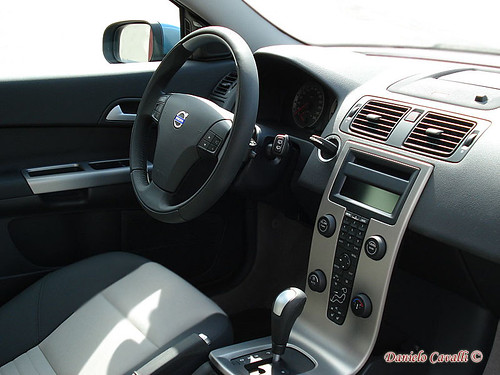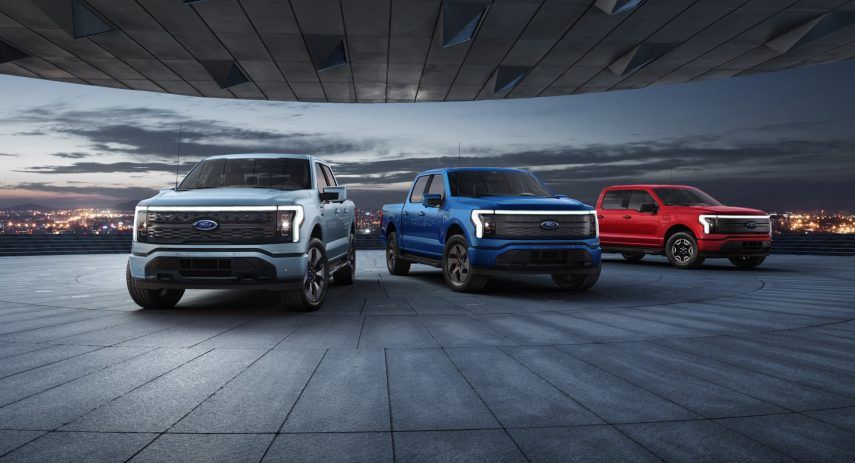Retirement marks a new chapter, a time when financial security and peace of mind become paramount. For many, this includes re-evaluating major expenses, and few are as significant as a vehicle. Buying a car in retirement isn’t just about style or performance; it’s fundamentally about long-term value, reliability, and predictable costs. With a fixed income and potentially fewer daily driving needs, retirees should meticulously prioritize vehicles that are affordable to maintain over time, ensuring their golden years aren’t overshadowed by unexpected automotive headaches.
Unfortunately, some popular car brands, despite their widespread appeal, come with surprisingly high upkeep costs that can steadily drain your savings. Protecting your budget means looking beyond the sticker price and diligently researching the cost to keep a car running throughout your retirement. Data from automotive experts like CarEdge reveals a clear picture: certain brands consistently rank as the most expensive to maintain, carrying a higher probability of requiring costly major repairs. These insights are crucial for making informed decisions that support your financial well-being.
In this in-depth guide, we’ll navigate through 14 car brands and specific models that retirees, especially those on a fixed income, may want to approach with caution. Our aim is to provide practical, actionable guidance, drawing on authoritative data regarding maintenance costs, reliability ratings, and common pitfalls. By understanding these potential vehicle liabilities, you can make smarter consumer decisions, choose a car that truly complements your retirement lifestyle, and avoid unnecessary financial stress.

1. **Ram**
Ram trucks, known for their robust capability, might have been a favored choice in your working life. However, as you enter retirement, it’s prudent to reevaluate such preferences through a financial lens. The industry average for maintenance costs for popular brands hovers around $8,303 over 10 years, a benchmark against which Ram’s estimated costs appear significantly steeper.
CarEdge data indicates that the average 10-year maintenance cost for Ram models is a substantial $21,595, representing a formidable bill for anyone on a fixed income. This figure isn’t just an average; specific models demonstrate even higher outlays. For instance, the Ram 3500 carries a 10-year maintenance cost of $27,445, while the Ram 2500 is close behind at $27,423.
Even the Ram 1500, a widely popular choice, comes with an estimated $19,357 in maintenance costs over a decade. These numbers are considerably above what many retirees might budget for routine vehicle upkeep, potentially eating into crucial Social Security benefits and retirement savings. Beyond the routine, the probability of major repairs presents an even greater concern. CarEdge found that there is a 68% chance that a Ram vehicle will need a major repair within 10 years of ownership, which is considerably worse — over 43% worse — than other auto manufacturers studied. Such a high likelihood of significant, unpredictable expenses makes Ram a brand that could pose substantial financial risk and considerable stress for retirees seeking stability and peace of mind.
Car Model Information: 2024 RAM 2500 Big Horn Crew Cab 4×4 6’4′ Box
Name: Ram Trucks
Logo: Ramchryslerlogo.png
FormerName: Dodge Ram
Type: division (business)
LocationCity: Auburn Hills, Michigan
Foundation: [object Object]
AreaServed: North America, Middle East, Latin America, Europe, Southeast Asia, Oceania, and Angola
Industry: Automobile
Predecessor: Graham Brothers,Fargo Trucks,Plymouth (automobile)#Plymouth trucks
KeyPeople: Tim Kuniskis (CEO)
Products: Truck
Parent: Chrysler
Homepage: https://www.ramtrucks.com/|ramtrucks.com
Categories: 2010 establishments in Michigan, All Wikipedia articles written in American English, All articles with unsourced statements, Articles with short description, Articles with unsourced statements from July 2024
Summary: Ram Trucks (stylized as RAM) is an American brand of light to mid-weight pickup heavy duty trucks and other commercial vehicles, and a division of Stellantis North America (previously Chrysler Group LLC). It was established in a spin-off of Dodge in 2009 using the name of the Ram pickup line of trucks. Ram Trucks’ logo was originally used as Dodge’s logo. New series Ram 1500 pickups are made at Sterling Heights Assembly in Sterling Heights, Michigan. Since its inception, the brand has used the slogan “Guts. Glory. Ram.”
Get more information about: Ram Trucks
Buying a high-performing used car >>>
Brand: Ram Model: trucks
Price: $49,500 Mileage: 15,750 mi.
Read more about: Carrie Ann Inaba’s Emotional Absence: Unpacking Her Health, the DWTS Family’s Support, and What Lies Ahead for Season 34’s Premiere
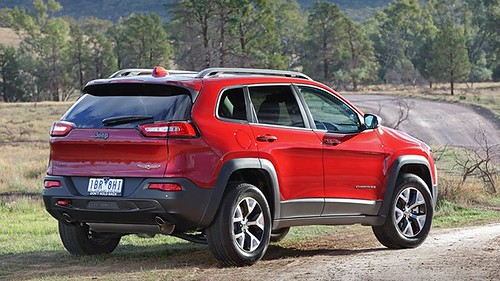
2. **Jeep**
Jeep vehicles, synonymous with adventure and off-road capability, often appear on mechanics’ lists of car models to avoid due to their higher-than-average 10-year maintenance and repair costs. For retirees, researching these costs is a wise step to prevent accidentally buying a new car that demands pricey upkeep and erodes their fixed income and Social Security benefits. The average 10-year maintenance cost for Jeep models is estimated at $11,690, well above the industry average of $8,303.
Specific Jeep models reinforce this concern with their anticipated expenses. The Jeep Gladiator, for example, has an estimated 10-year maintenance cost of $12,679. The Jeep Grand Wagoneer L and Grand Wagoneer follow closely with costs of $12,375 and $12,269, respectively. Even the iconic Jeep Wrangler comes with a 10-year maintenance estimate of $11,664, while the Grand Cherokee sits at $11,217. These figures consistently exceed the average, pointing to a pattern of higher ongoing expenses.
Compounding the maintenance costs is the elevated chance of requiring a major repair. With a Jeep, there is a 32% chance your vehicle will need a major repair within the first 10 years of ownership, whereas the industry average sits at a little over 24%. Furthermore, certain models like the Wrangler Unlimited, while legendary for off-road capability, come at the cost of on-road comfort and fuel economy, with the Rubicon 392 variant managing only 13 MPG. The high step-in height and heavy doors also create accessibility challenges for aging bodies, adding practical difficulties to the financial burden.
Read more about: Buyer’s Alert: 7 SUVs Prone to Major Breakdowns Before Hitting 80,000 Miles

3. **Chrysler**
When meticulously budgeting monthly expenses in retirement, factors like gas and insurance for your car are typically accounted for. However, excessive and unpredictable maintenance costs, which are unfortunately common with Chrysler vehicles, can quickly push you over what you have allotted. Data suggests that if you decide to purchase a Chrysler, you’ll have to factor in maintenance costs that are $3,064 higher than the industry average over a 10-year period.
The average 10-year maintenance cost for Chrysler models is $11,367. Breaking this down further, the popular Chrysler Pacifica minivan, often considered practical for families, has an estimated 10-year maintenance cost of $11,520. Its counterpart, the Chrysler Voyager, is not far behind with an estimated cost of $11,207. While these vehicles promise minivan practicality, their track record of poor reliability makes them a risky investment, especially for retirees who cannot afford frequent, costly repairs.
Moreover, there is a 32% chance of a Chrysler vehicle needing a major repair within its first 10 years of ownership. Consumer Reports predicts only an average reliability score for the 2025 Pacifica, citing major problems with the 2022 and 2023 versions, ranging from the electrical system to in-car electronics and transmission issues. This isn’t a new trend, with the model being subject to numerous recalls over the years, including a significant one for the plug-in hybrid model due to fire risk. For a retiree on a fixed income, all these issues and unpredictable and often expensive repairs can be a financial disaster, making Chrysler a potentially poor choice for retirees seeking dependable and financially predictable transportation.
Read more about: 15 Classic Cars You Might Want To Skip: An Expert Guide for Discerning Collectors

4. **Dodge**
For retirees committed to fiscal prudence and frugal living, investing in cars that demand more than just standard wear and tear on the wallet is a critical misstep. Dodge vehicles, unfortunately, fall into this category, with an average 10-year maintenance and repair cost of $11,352. This figure stands $3,049 over the industry average, meaning retirees will have to account for that added expense when budgeting.
Similar to the Chrysler and Jeep brands, Dodge vehicles come with a 32% chance of requiring a major repair within the first 10 years of owning the vehicle. This high probability of significant, unforeseen expenses can create considerable financial strain. Some 2025 Dodge models, for instance, can be particularly expensive to upkeep; the Dodge Durgango has estimated 10-year maintenance costs of $11,768, while the Dodge Hornet sits at $10,934. These figures highlight the consistent financial burden associated with the brand.
Beyond maintenance, Dodge also features prominently on lists of lower-quality vehicles. Despite ranking as the highest-ranking brand in last year’s J.D. Power study, Dodge experienced a dramatic fall to second to last in a recent quality study with 301 problems per 100 vehicles (PP100). This dramatic fall could be partly thanks to the 2024 Dodge Hornet, with the National Highway Traffic Safety Administration (NHTSA) reporting multiple recalls, complaints and manufacturer communications for that particular model. This combination of high maintenance costs and significant quality concerns makes Dodge a brand to approach with extreme caution in retirement.
Read more about: From Anemic to Awkward: Unmasking 15 Muscle Cars That Truly Missed the Mark – And Why We Can’t Forget Them

5. **Ford**
The marketing slogan “Built Ford tough” often evokes an image of durability and resilience. However, for retirees, this robustness doesn’t necessarily translate into financial ease. The cost to maintain and repair your Ford over 10 years will run an average of $10,392, which is $2,089 over the average for popular brands overall. If you want to stretch your nest egg a bit further in retirement, you may want to consider alternative modes of transportation.
And the chance your vehicle will need a major repair during that time is approximately 7% worse than the standard. Specific models come with notable costs: the Ford F-150 to Ford F-450 range can incur 10-year maintenance costs from $11,367 to $16,170. Other popular models like the Ford Expedition and Bronco also feature substantial maintenance expenses, at $10,302 and $10,159 respectively, with the Ford Explorer at $9,766.
Beyond general maintenance, certain Ford models present unique challenges for older drivers. The Ford Mustang, for instance, with its quintessential sports car design, creates immediate accessibility problems. Its low seating position requires extensive bending and crouching that can strain aging joints, particularly knees and hips. The low roofline severely limits visibility, creating dangerous blind spots that are particularly problematic for older drivers who may have slower reaction times. Reliance on the touchscreen in newer models for basic functions like climate control can also be distracting and difficult to use, making the Mustang a less practical choice for comfortable and predictable retirement driving.
Read more about: Robert Redford: The Last American Movie Star – An In-Depth Look at a Screen Legend’s Enduring Legacy and Impact
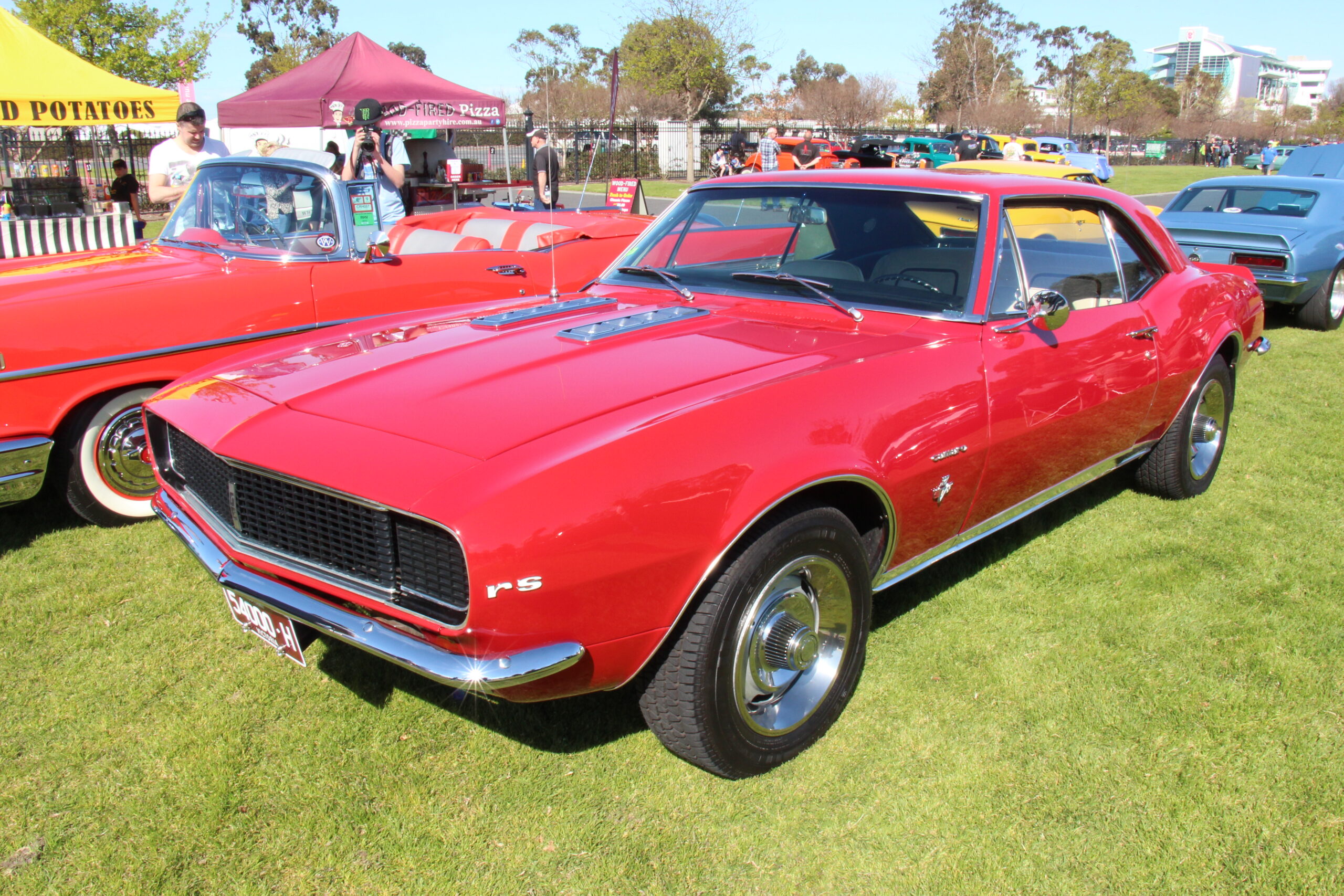
6. **Chevrolet**
Chevrolet is another incredibly popular car brand, yet it presents a steeper-than-average 10-year maintenance and repair cost for retirees — $1,359 higher to be exact, leading to a total 10-year cost of $9,662. For individuals on a fixed income, these added expenses can accumulate, requiring careful financial planning to absorb potentially costlier mechanic bills alongside their other necessary expenses.
The risk of major repairs is also elevated with Chevrolet vehicles. With a 28% chance of your Chevy needing a major repair, which is 4% worse than other auto manufacturers studied, this increased likelihood of costly, unforeseen repairs can be a significant source of stress for retirees. Popular models such as the Chevrolet Silverado 1500 to Chevrolet Silverado 3500 series can have 10-year maintenance costs ranging from $11,045 to $15,497. The Chevrolet Colorado, Suburban, and Tahoe also carry high 10-year maintenance costs of $10,713, $10,108, and $10,029, respectively.
Furthermore, specific Chevrolet models introduce distinct concerns. The Chevrolet Camaro, whose production ended in January 2024, now faces immediate and worsening parts availability issues, creating a ticking time bomb for owners. Its low seating, poor visibility, and two-door design make it impractical and uncomfortable for many older drivers. The Chevrolet Bolt EUV, an electric vehicle, suffered widespread battery failures in 2021 that necessitated a massive recall, with complete replacements costing around $16,000, often exceeding the vehicle’s resale value if not covered. Its one-pedal drive mode and steering-wheel regenerative braking paddle can also be complicated and confusing for many older drivers who’ve spent decades with traditional brake pedals, adding complexity to the ownership experience.
Read more about: 15 Classic Cars You Might Want To Skip: An Expert Guide for Discerning Collectors
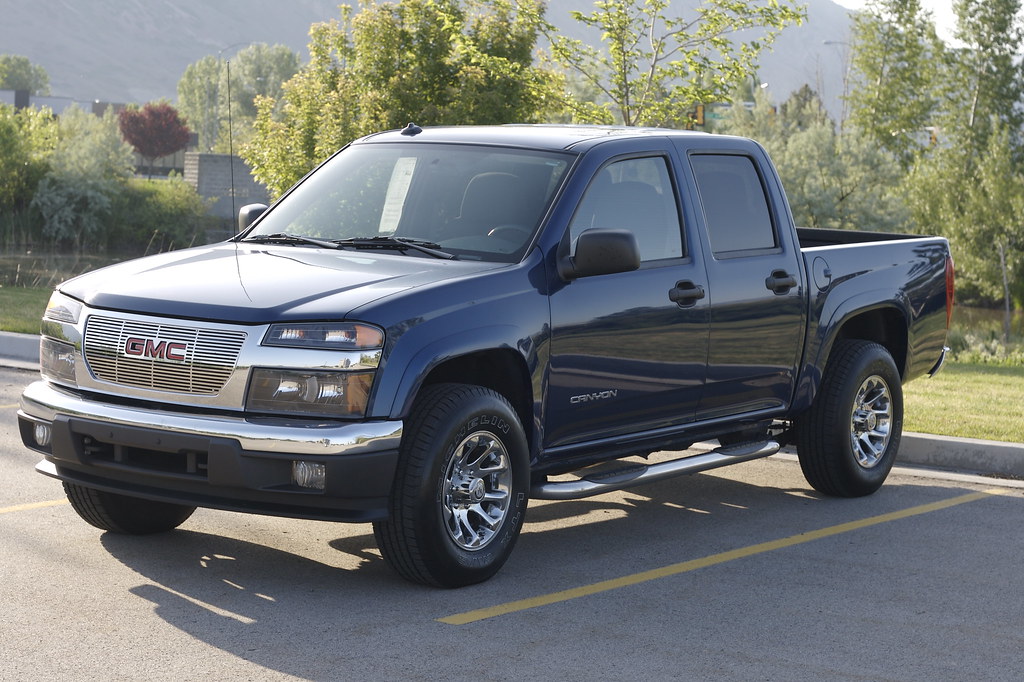
7. **GMC**
While it may seem counterintuitive to expect the unexpected, when it comes to car expenses, retirees may find that their emergency savings aren’t sufficient to cover some of the maintenance costs associated with GMC vehicles. GMC models on average will cost retirees nearly $9,500 in maintenance and repairs over 10 years, a figure that surpasses the industry average and requires careful consideration within a retirement budget.
This financial burden is compounded by an elevated risk of significant mechanical issues. Not only that, but GMC vehicles have a 28% chance of requiring a major repair within their first decade of ownership, aligning with the concerns seen across other popular brands like Chevrolet. This percentage indicates a higher probability of facing substantial and unforeseen repair bills, which can be particularly disruptive for those managing a fixed income.
The cost figures for specific GMC models further underscore this financial outlook. For instance, the GMC Sierra 1500 to GMC Sierra 3500 range incurs 10-year maintenance costs between $10,002 and $14,014. Other popular models like the GMC Canyon, with costs of $9,568, and the GMC Yukon XL, at $9,373, also contribute to the brand’s higher-than-average maintenance profile. For retirees prioritizing predictable expenses and minimal financial surprises, these statistics suggest a need for caution when considering a GMC vehicle.
Read more about: Beyond the Quarter-Million Mark: Our Shortlist of Cars Engineered for Extreme Longevity

8. **Buick**
Buick, a brand that often promotes itself with a tagline of “exceptional by design,” might lead retirees to believe they’re investing in quality and dependability. However, the financial reality of owning a Buick in retirement could paint a different picture, potentially adding unexpected burdens to a carefully planned budget. While its maintenance costs might not be as astronomically high as some other brands, every dollar counts significantly when living on a fixed income.
CarEdge data reveals that the average 10-year maintenance and repair cost for Buick models is $9,018. This figure is $715 higher than the industry average, which, while seemingly modest, can certainly accumulate over a decade. For retirees meticulously managing their monthly expenses, this consistent overage can subtly erode savings, especially if not anticipated and budgeted for in advance.
Furthermore, the brand carries an elevated risk of requiring significant repairs. There is a 25% chance that a Buick vehicle will need a major repair within its first 10 years of ownership, a statistic that is 1% worse than other manufacturers. This increased probability of unforeseen and costly mechanical issues means that a retiree might have to dip into emergency savings more frequently than desired, adding stress to their golden years.
Specific models also reflect this trend of higher-than-average upkeep. For instance, the Buick Enclave has estimated 10-year maintenance costs of $9,322. The Buick Envision follows with projected costs of $9,105, and the Buick Encore GX sits at $8,857. These figures, though varying, consistently place Buick above the industry average, signaling that retirees should approach this brand with a discerning eye and a firm grasp of potential long-term expenses to avoid financial surprises.
Read more about: 12 New Cars Named ‘Best Buys’ for 2025: An Expert Guide for Savvy Shoppers

9. **Polestar**
As electric vehicles (EVs) gain traction, many retirees might consider them for their perceived lower running costs and environmental benefits. However, newer brands, especially those at the forefront of EV technology like Polestar, come with their own set of potential challenges, particularly concerning quality and reliability, which are critical considerations for those on a fixed income. These challenges are reflected in comprehensive industry studies that scrutinize vehicle performance and owner satisfaction.
Polestar, despite recent models drawing positive reviews from specialist reviewers like Car and Driver, found itself at the bottom of the J.D. Power quality study. The brand recorded a significant 316 problems per 100 vehicles (PP100), starkly contrasting with the industry average of 195 PP100. This high number of reported issues could signal potential headaches for owners, translating into frequent trips to the service center and unforeseen repair costs.
While a high PP100 score certainly indicates potential low quality, it is also important for retirees to consider the broader context of the EV market. The electric vehicle industry is currently experiencing “growing pains” and grappling with “general supply issues,” factors that could influence initial quality ratings. These systemic challenges within a rapidly evolving sector might contribute to new brands facing more hurdles in their early years, which could impact the ownership experience for consumers.
For retirees, this means that while Polestar vehicles might offer innovative technology and a modern driving experience, the risk of encountering new or complex issues is higher. Addressing these problems could require specialized expertise and potentially longer service times due to parts availability, factors that can disrupt a retiree’s routine and strain their budget. Therefore, a cautious approach and thorough research into long-term reliability are essential before committing to such an emerging brand.
Read more about: Buyer’s Guilt on Wheels: 14 Cars Owners & Mechanics Urge You to Steer Clear Of
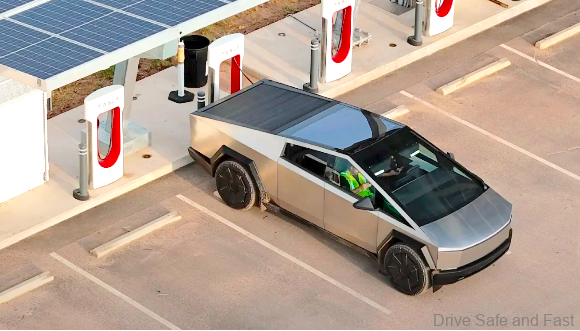
10. **Tesla**
Tesla, a pioneer in the electric vehicle revolution, often captures the imagination with its cutting-edge technology and performance. Yet, for retirees prioritizing consistent reliability and predictable ownership costs, the brand presents a complex landscape riddled with quality control concerns and user interface challenges that can undermine peace of mind. These issues have been consistently highlighted in major automotive quality assessments, painting a picture that retirees should carefully consider.
The J.D. Power 2024 U.S. Initial Quality Study placed Tesla near the bottom of its rankings, with 266 problems per 100 vehicles (PP100). The company has “consistently ranked near the bottom” since its inclusion in the study in 2022, signaling ongoing quality control shortcomings. Concrete examples of these issues include the recall of “23,000 Cybertrucks being recalled due to faulty wiper motors and trim problems,” along with a previous recall addressing “accelerator pedal defects.” Such recurring recalls underscore a pattern of manufacturing inconsistencies that can be a significant source of frustration and unexpected expense for owners.
Beyond manufacturing defects, specific Tesla models, such as the Model 3, introduce usability challenges that are particularly salient for older drivers. Its “minimalist design creates serious usability challenges for older drivers who need intuitive, accessible controls.” Basic functions, like “adjusting air vents or changing radio volume,” necessitate navigating “touchscreen menus,” compelling drivers to divert their attention from the road for tasks that traditionally relied on physical buttons and knobs. This “digital-first philosophy can feel alien to those used to decades of physical buttons and knobs,” steepening the learning curve.
The unpredictability of Tesla’s over-the-air updates further complicates the user experience. These updates can “completely reorganize the interface overnight,” altering menu layouts without prior warning and forcing drivers to “relearn basic functions.” This constant flux can be incredibly frustrating for seniors who benefit from “consistent, familiar controls,” making “emergency situations” potentially “more dangerous when critical functions are buried in touchscreen menus.” Additionally, the distinctive “regenerative braking system” and “one-pedal driving mode,” while efficient, can feel “unnatural” and “disconcerting” compared to traditional cars, requiring a significant period of adaptation that not all older drivers may find easy or comfortable to master, adding another layer of complexity to the driving experience.
Read more about: 12 New Cars Named ‘Best Buys’ for 2025: An Expert Guide for Savvy Shoppers

11. **Rivian**
Rivian, another prominent player in the burgeoning electric vehicle market, shares many of the emerging brand challenges seen with Polestar and Tesla, particularly concerning reliability. For retirees, this translates into potential ownership risks that could outweigh the appeal of a technologically advanced vehicle, underscoring the importance of choosing a proven, dependable mode of transportation for their golden years.
In the J.D. Power quality study, Rivian tied with Tesla, also scoring 266 problems per 100 vehicles (PP100). This figure, significantly higher than the industry average, suggests that Rivian vehicles may come with a higher incidence of issues that require attention. Such a high PP100 score indicates that owners are reporting a substantial number of problems shortly after purchasing their vehicles, which can quickly lead to buyer’s remorse for those seeking hassle-free ownership.
Further compounding these concerns is Rivian’s “CarEdge Predicted Reliability Score of 24/100,” a stark indicator of anticipated long-term issues. This low score suggests that even beyond initial quality, the brand’s vehicles are likely to face significant reliability problems over time. Adding to this, Consumer Reports has identified Rivian as “one of Consumer Reports’ worst car brands for 2024,” citing “significant reliability concerns from owners.”
As the “third EV brand on the list” to face such criticisms, Rivian exemplifies the ongoing hurdles within the electric vehicle segment. While the allure of new technology is strong, these data points collectively paint a picture of a brand that, for now, carries considerable risk for retirees. The combination of initial quality issues, low predicted reliability, and widespread owner concerns makes Rivian a potentially costly and frustrating choice, challenging the desire for stability and predictable expenses in retirement.
Read more about: Don’t Waste Your Cash: Understanding EV Battery Longevity and Replacement Realities
12. **Volvo**
Volvo, long associated with safety and a sophisticated European aesthetic, might appear to be a sensible choice for retirees. However, beneath this reputable image, recent data suggests that the brand’s vehicles can come with their own set of reliability issues and unexpectedly high maintenance costs, which could significantly impact a retiree’s financial planning and peace of mind. These concerns extend beyond mere inconveniences, pointing to more substantial problems.
The J.D. Power 2024 U.S. Initial Quality Study revealed that Volvo vehicles experienced 242 problems per 100 vehicles (PP100). While this is better than some of the lowest-ranking brands, it still places Volvo above the industry average of 195 PP100, indicating a higher frequency of reported issues. “Common complaints for 2024 Volvos seem to be electrical issues, engine problems and a frustrating infotainment system.” These types of problems, particularly electrical and engine-related, can be complex and expensive to diagnose and repair.
Adding to the reliability concerns, CarEdge gives Volvo a “Predicted Reliability Score of 28/100,” which is notably low. This score indicates that future maintenance and repair needs are likely to be substantial. Indeed, the average 10-year maintenance and repair costs for Volvo models are estimated at a considerable $11,328. This figure stands “over $6,000 higher than the luxury car industry average,” making Volvo a surprisingly expensive choice for long-term ownership.
For retirees on a fixed income, an average maintenance cost that is so significantly above its luxury peers can be a major financial drain. Such high long-term costs, combined with a higher likelihood of experiencing electrical or engine issues, could lead to frequent and expensive dealership visits. This scenario is precisely what retirees aim to avoid, as it directly impacts their budget and disrupts the predictable, stress-free lifestyle they seek in their golden years.
Read more about: Beyond the Quarter-Million Mark: Our Shortlist of Cars Engineered for Extreme Longevity
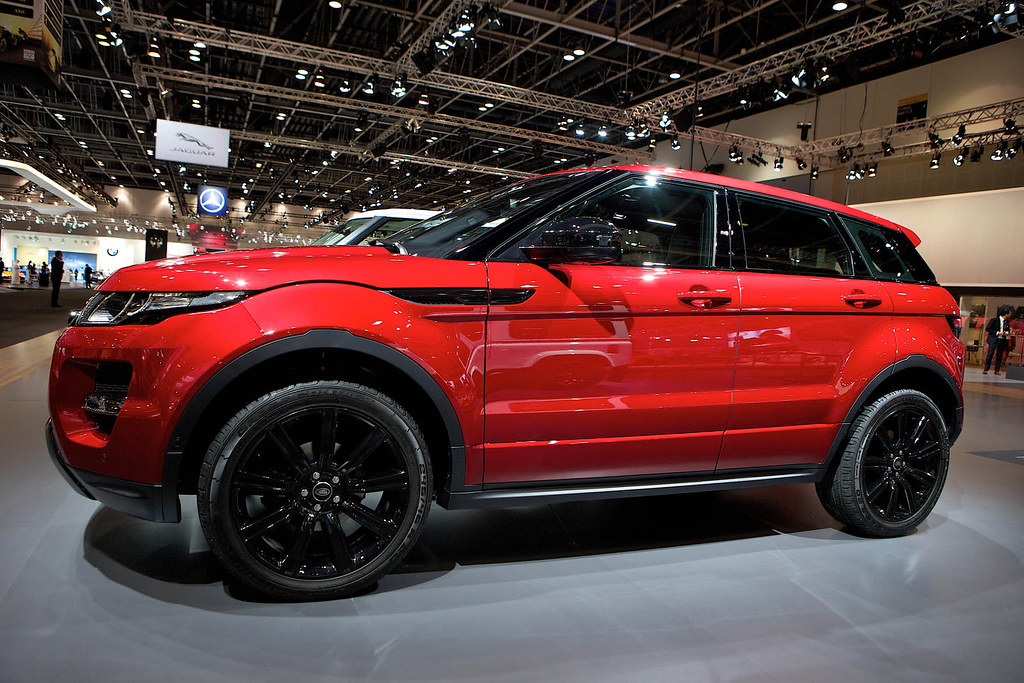
13. **Land Rover**
The allure of a Land Rover, with its promise of luxury, capability, and refined driving experience, can be very tempting, even for retirees. However, prospective owners on a fixed income should exercise extreme caution, as the brand is notorious for its poor reliability and exceptionally high maintenance costs. These factors can quickly turn the dream of luxury ownership into a financial nightmare, making it one of the most problematic choices for those seeking stability.
RepairPal rates Land Rover with an “uninspiring 2.5 out of five reliability rating,” positioning it as the “No. 2 least dependable brand” and a dismal “31 out of 32 among all brands.” This ranking is based on a comprehensive assessment where “the frequency, severity and cost of repairs all much higher than average.” Such statistics clearly indicate that Land Rover owners are likely to face frequent, serious, and expensive mechanical issues, making it a highly unpredictable vehicle to own.
The financial burden is particularly pronounced with the flagship Range Rover model. While its four trims start at just under $50,000 and can run into “the six figures,” its “notorious long-term maintenance costs make it much more expensive to own than comparable vehicles of similar quality.” Adding insult to injury, it is documented that “no luxury vehicle bleeds value faster,” with CarEdge ranking the Range Rover “dead last for depreciation out of 217 luxury vehicles as having the segment’s lowest five-year residual value” at just “24.4%.” This rapid depreciation further exacerbates the financial strain, as retirees would lose a significant portion of their initial investment very quickly.
Specific models within the Land Rover lineup also present critical concerns for retirees. The “2018+ Land Rover Discovery Sport” has a “terrible reliability record,” with Consumer Reports expecting the “2025 Discovery Sport to be less reliable than other new cars.” A “known weakness” is the turbocharger on the Ingenium 2.0L engine, with failures that can be “sudden” and present “warning signs like whining noises and black or blue exhaust smoke.”
Replacing a turbocharger alone can cost between “$3,695 and $3,952,” with “more extensive damage potentially leading to a higher cost for a full engine rebuild.” The cooling system is “another major failure point” that “could result in a complete system breakdown and engine damage if not caught immediately.” These “unpredictable nature of these failures” means a Discovery Sport might “run perfectly for months, then suddenly need weeks of shop time,” creating immense stress and financial pressure—precisely what retirees want to avoid.
Car Model Information: 2021 Nissan Rogue SL
Name: Land Rover Range Rover Velar
Caption: 2017 Range Rover Velar First Edition D3
Manufacturer: Jaguar Land Rover
ModelCode: L560
Production: 2017–present
Assembly: Solihull
Designer: Gerry McGovern
Class: Compact executive car,crossover SUV
BodyStyle: Sport utility vehicle
Related: Jaguar XE,Jaguar XF (X260),Jaguar F-Pace
Layout: Front-engine, four-wheel-drive layout
Engine: ubl
Motor: ubl
Abbr: on
Transmission: ZF 8HP transmission
Drivetrain: Mild hybrid,PHEV
Battery: Kilowatt-hour,Lithium-ion battery
Wheelbase: 2874 mm
Length: 4803 mm
Width: 2032 mm
Height: 1665 mm
Weight: convert
Sp: uk
Charging: 35 kW DC (PHEV 2023)
Categories: All-wheel-drive vehicles, All Wikipedia articles written in British English, Articles with short description, Cars introduced in 2017, Cars of India
Summary: The Land Rover Range Rover Velar, generally known as the Range Rover Velar, () is a crossover SUV produced by British automotive company Jaguar Land Rover under their Land Rover marque. The fourth model in the Range Rover line, the Velar was unveiled on 1 March 2017 in London, England. The Velar was released in the summer of 2017. The name Velar had previously been used for a series of pre-production first-generation Range Rovers in 1969.
The Range Rover Velar was named “World’s Most Beautiful Car” in 2018, receiving the design award at the 2018 World Car Awards.
The vehicle received a facelift in 2023.
Get more information about: Range Rover Velar
Buying a high-performing used car >>>
Brand: Land Rover Model: Land Rover
Price: $20,995 Mileage: 117,217 mi.
Read more about: 15 Classic Cars You Might Want To Skip: An Expert Guide for Discerning Collectors

14. **Fisker Ocean**
For retirees considering an emerging electric SUV, the Fisker Ocean presents a unique and particularly stark warning due to catastrophic financial instability. As of today, acquiring a Fisker Ocean is “essentially buying a very expensive paperweight,” representing one of the most significant ownership risks imaginable for anyone, especially those on a fixed income. The brand’s recent corporate actions have rendered its vehicles nearly worthless from a practical standpoint.
Fisker “filed for Chapter 11 bankruptcy protection in June 2024,” a move that immediately leaves owners in an incredibly precarious position. This financial collapse means that “owners [are left] completely stranded without official parts, service, or warranty support.” In a practical sense, any investment in a Fisker Ocean “becomes worthless the moment you buy it” because the infrastructure to support the vehicle no longer exists.
The consequences of this bankruptcy are dire and far-reaching for owners. “No authorized dealers remain to handle repairs, no parts supply chain exists, and no one will honor warranty claims.” This means that even “simple fixes may become impossible because replacement parts don’t exist in the marketplace.” Furthermore, “resale values have crashed since no smart buyer wants a car they can’t fix.” Even if an Ocean “runs perfectly today, software problems could disable the entire vehicle tomorrow with no way to repair it,” leaving owners with a non-functional asset.
The situation is so critical that “insurance companies now declare them total losses for even minor damage due to parts unavailability.” For retirees, this scenario is a complete financial disaster, turning a significant investment into an unrepairable and unsellable liability. It is a powerful illustration of why thorough due diligence on a manufacturer’s financial health is as crucial as vehicle reliability when making a major purchase in retirement.
Car Model Information: 2023 Fisker Ocean Extreme
Name: Fisker Ocean
Manufacturer: Fisker Inc
Production: Cite web
Assembly: Graz
Designer: Henrik Fisker
Class: Mid-size crossover SUV
BodyStyle: SUV
Layout: unbulleted list
Transmission: 1-speed EVT
Motor: 349 kW
Battery: 113.00 kWh
Abbr: on
ElectricRange: unbulleted list
Wheelbase: 2921 mm
Disp: flip 22″ Wheel
Length: 4774 mm
Width: 1982 mm
Height: unbulleted list
Sp: us
Weight: cvt
Categories: Articles with short description, CS1 maint: bot: original URL status unknown, Cars discontinued in 2024, Cars introduced in 2021, Cars of Austria
Summary: The Fisker Ocean is a discontinued battery electric mid-size crossover SUV that was manufactured and marketed by Fisker, which filed for bankruptcy protection in June 2024. Released in 2023, the Ocean was intended to be the first of three models in a lineup of mass-market all-electric vehicles designed by Henrik Fisker.
Get more information about: Fisker Ocean
Buying a high-performing used car >>>
Brand: Fisker Model: Ocean
Price: $23,991 Mileage: 1,168 mi.
Read more about: Beyond the 911: 10 Thrilling Sports Cars That Deliver Porsche-Level Performance for Less
Choosing the right vehicle in retirement is a pivotal decision, one that extends far beyond the initial purchase price. It’s about securing your peace of mind, safeguarding your hard-earned savings, and ensuring your mobility remains an enabler of freedom, not a source of stress. The insights shared in this guide, drawing on authoritative data regarding maintenance costs, reliability ratings, and common pitfalls, are designed to empower you to navigate the complex automotive market wisely. By prioritizing long-term value, predictable expenses, and proven reliability over fleeting trends or perceived luxury, you can select a vehicle that truly complements your retirement lifestyle, allowing you to enjoy your golden years with confidence and without unnecessary financial burdens. Make an informed choice, and drive into your retirement years knowing your vehicle is a dependable asset, not a looming liability.


